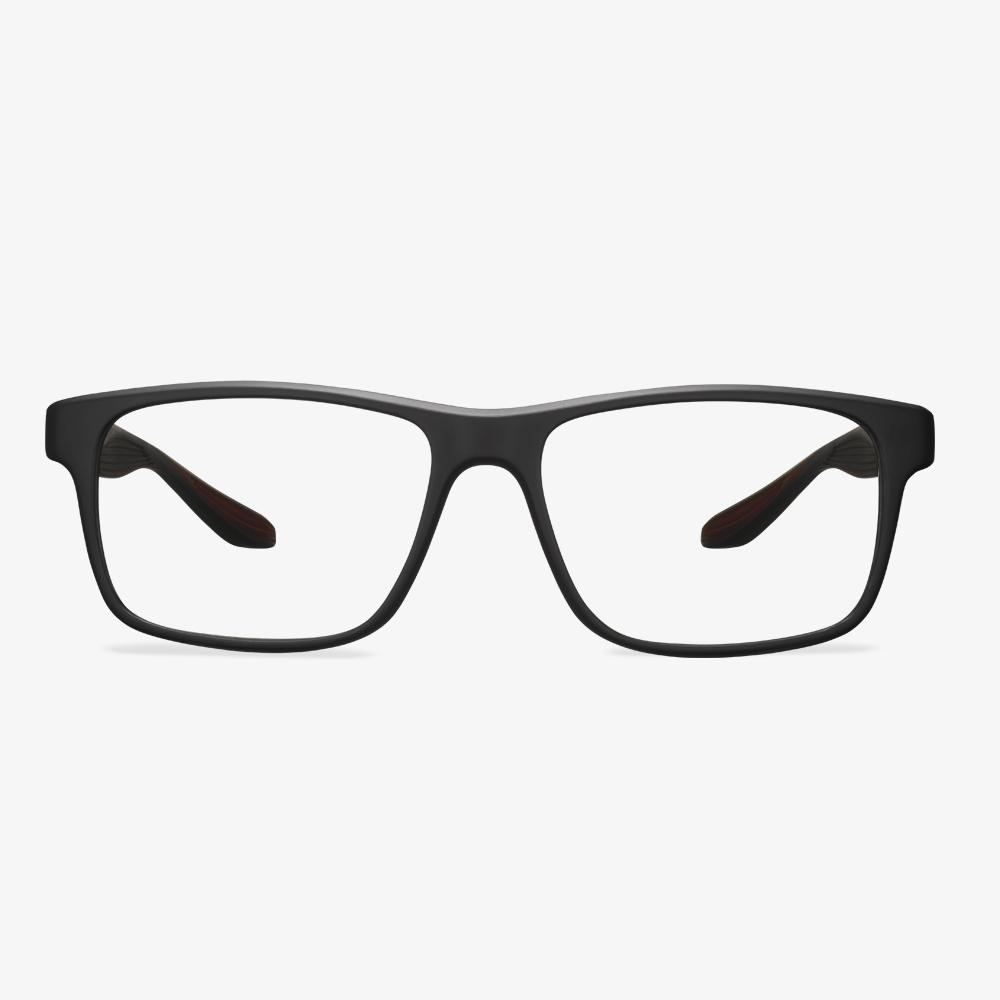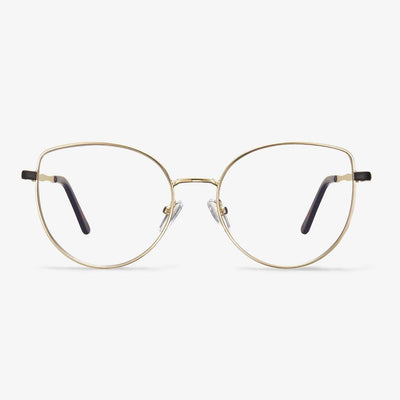How to Choose Reading Glasses?
Choose big frames the first time. When choosing reading glasses, you can choose the big frames for the first time. You may need larger glasses frames or lenses to really get the sweet spot of where the prescription is.
And if you have never worn glasses for eye conditions such as nearsightedness, farsightedness or astigmatism, it is likely you will be able to see well with non-prescription reading glasses. So, you can buy these non-prescription reading glasses.
Contact Lens Materials - Nesofilcon A and Omafilcon A
Nesofilcon A is super water glue. This is the proprietary material of Bausch & Lomb and is now used in only one product, the Bausch & Lomb Pure Suncast (launched in the US in 2012). Water content is 78%, and the oxygen permeability is DK/T =42.
Through PC Technology, the Omafilcon A material contains substances that mimic the composition of cell membranes--- including human eyeball cells, and locks water, and prevents dryness.
How to protect your contact lenses?
When wearing contact lenses, do not drop any eye drops, and only use a special moistening solution for contact lenses. In daily life, we recommend that dry eyes can be relieved with lubricating fluid, but we do not advocate frequent use of lubricating fluid, so as not to make the eyes become dependent on lubricating fluid. The right way is to do blink training. The ingredients contained in the eye drops will remain in the lenses, which will cause certain damage to the eyes and pollute the lenses. Some eye drops can make the lenses tinted after use, which will affect the transmittance and a refractive number of the lenses and make the vision blurred. Ladies who need to make up should wear contact lenses before making up. When removing makeup, remove contact lenses before removing makeup, to avoid the makeup sticking to the lens and damaging the lens and eyes. Lenses should not be lent to others to avoid cross-infection of eye diseases. You can't wear contact lenses while swimming or bathing.
Where to Buy Titanium Glasses?
After learning the advantages and disadvantages of the titanium glasses, you may ask where I can buy them if I have a lot of budgets. In order to buy titanium glasses, Koalaeye Optical is recommended.
The Koalaeye glasses are stylish and come at a very cheap price. What’s more, Koalaeye Optical provides all kinds of glasses, sunglasses and frames. And the glasses can be shipped for you free. So, if you want to buy titanium glasses, try Koalaeye Optical.
Sunglasses
Sunglasses have a visible light transmittance of about 20% and can absorb ultraviolet and infrared rays well. It also has a variety of colors such as light green, light gray, light brown, etc., used to protect in different occasions. Among them, light gray lenses have little effect on color recognition. Light brown glasses make the blue sky look darker and reduce the transmission of green light. Light green lenses reduce the transmission of red light.
Sunglasses not only have a wide range of varieties, but with the improvement of decoration and health care effects, their scope of use has become more extensive. As the time to update sunglasses can be rapid, fashionable men and women would love to have multiple sunglasses to match clothes to satisfy their pursuit of fashion.
The design evolution of progressive lenses
Spherical and aspheric designs
The design of the front surface of the far-use area of the early progressive lens is similar to that of the ordinary spherical single vision lenses, so it is called a spherical progressive lens. Since 1974, the front surface of the far-use region of the lens is designed to be aspheric by designers, which not only reduces the peripheral aberration but makes the lens thinner, lighter, and less powerful.
Hard and soft design
For hard design, the channel is short, and the gradient is large. The near-use area position is high. The effective visual area of remote and near-use areas was larger. Peripheral astigmatism is relatively concentrated. Because surrounding astigmatism increases rapidly and the distribution is dense, the curve effect is more obvious. The gradient area is narrow. It is more difficult and takes longer for wearers to adapt.
Lenses with soft designs have slower gradients, longer gradients, and wider gradients. The angle of rotation of the eye from the far area to the near area is greater. It's easier to get used to. Compared with the hard design, the effective visual area of the far and near use areas is smaller, and the location of the near use area is lower.
Single, diverse, and individualized design
Initially, the progressive lenses used a single design, in which each basic curve was scaled equally and a luminosity combination was added within the range of its semi-finished lens blanks. The steepest base curve uses the same lens design as the flattest base curve. Lenses designers quickly realized that the overall performance of the lens could be improved by microcustomizing the lens design, leading to progressive lenses with multiple designs. This kind of design is called diverse design. By the mid-1990s, there was the emergence of individualized lens designs. In addition to using different gradients, these first individualized lens designs used steeper baseline curves with a slightly larger approach area to compensate for increased magnification and reduced field of view.
Symmetrical and asymmetric design
There is no difference between the left and right eyes in the symmetrical design of progressive lenses. As the eyes turn inward when they see near objects, the gradual gradient area gradually tilts to the nasal side from top to bottom, so the left/right progressive lenses should be rotated clockwise/counterclockwise respectively during processing. An asymptotic lens with left and right eye divisions is called an asymmetric design. The gradient is gradually and moderately inclined to the nasal side from top to bottom. The refractive force, astigmatism, and vertical prism of the two sides of the left and right gradient of the asymmetric design lenses are basically similar. At the same time, considering the characteristics of eye movement parameters in binocular vision, the peripheral aberrations of the corresponding positions of the left and right lenses were appropriately balanced to improve the visual effect of the wearer.
Types of Varifocal Lenses
As is well known, there are several types of varifocal lenses. So, in this section, we will list some the types of varifocal lenses.
Standard varifocal lens: standard varifocal lenses are the entry-level varifocal options and are chosen as an enhanced alternative to bifocals. They have clear and fairly wide focal areas for distance, reading, and in between.
Premium varifocal lens: premium varifocal lenses are also called free form varifocals or back surfaced digital varifocal lenses. It offers much clearer vision at all points and is a significant step up from a standard varifocal lens in terms of vision, clarity, focus, and ease of adapting to them. They are created using the latest computer-driven equipment and have a wider field of vision at the distance, intermediate/in-between, and reading focal points.


















































